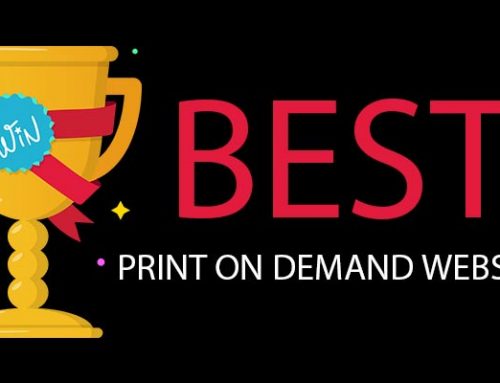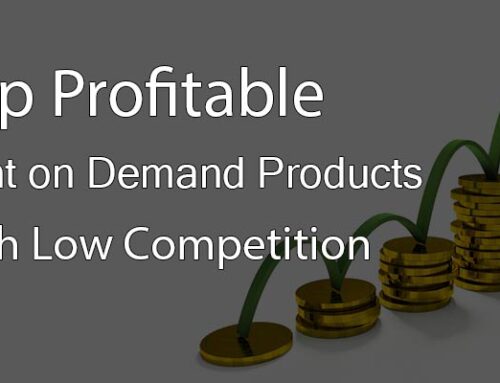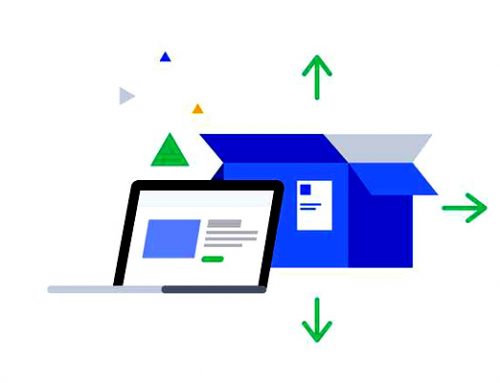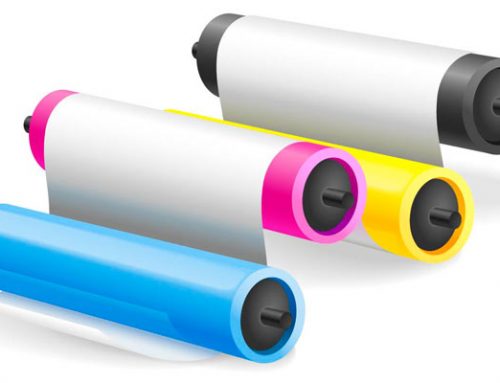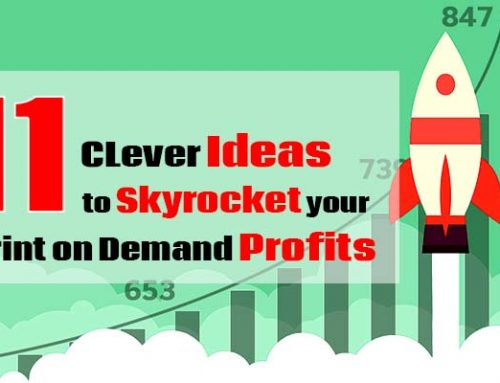The print-on-demand (POD) industry has exploded in recent years, with online entrepreneurs realizing it’s easy to create a t-shirt brand or merchandise store without substantial upfront investments. Right now, two of the most popular print-on-demand companies are Printify and Printful – but which one is better for your business?
The two main differences are that Printful has its printing facilities worldwide, while Printify works with external providers. Additionally, Printify offers a vast selection of products, while Printful has a smaller range.
Here’s an in-depth comparison of everything you need to know before deciding.
Printful vs. Printify: An Overview
Before we dive into the details, here’s a comparison table highlighting all the differences and similarities between Printify and Printful.
| Printful | Printify | ||
| Overview | Founded | 2013 in California | 2015 in Riga, Latvia |
| Headquarters | Charlotte, North Carolina and Riga, Latvia (EU ) | Headquarters: San Francisco, California | |
| Business model | Owns and operates its own printing and fulfillment centers | Acts as a middleman, connecting sellers to third-party print providers | |
| Items delivered | 70 million+ | 65 million+ | |
| Pricing | Free to sign-up | Yes | Yes |
| Premium subscription | Launching soon | Yes | |
| Paid plans start from | – | $29/month | |
| Production Techniques | DTG | Yes | Yes |
| Embroidery | Yes | Yes | |
| Sublimation | Yes | Yes | |
| Cut & sew | Yes | Yes | |
| AOP | Yes | Yes | |
| Print Network | Choose your print provider | No | Yes |
| Print facilities | 15+ | 100+ | |
| Print providers | In-house printing | 3rd-party print partners | |
| Fulfillment & Shipping | Average fulfillment time | 1-3 business days | 2-5 business days |
| Average shipping time | 2-7 business days | 4-12 business days | |
| Flat shipping rates | Yes | Yes | |
| Live shipping rates | Yes | Yes | |
| Custom return address | Yes | Yes | |
| Customer Suppport | Live chat | Yes | Yes |
| Yes | Yes | ||
| Phone | No | No | |
| Branding | Product branding | Inside labels, outside labels, sleeve printing, embroidered logo | Neck labels |
| Packaging branding | White-label packaging, packing slips, pack-ins | Branding inserts | |
| White label order-tracking page | Yes | No | |
| Design Tools | Product mockup generator | Yes | Yes |
| Embroidery mockup generator | Yes | Yes | |
| Text Tool | Yes | Yes | |
| Ai generator | No | Yes | |
| Graphics/clipart tool | Yes | Yes | |
| Design share for group orders | Yes | No | |
| Frontend product personalization tool | Yes | No | |
| Design services | Yes | No | |
| Shutterstock integration | No | Yes (Charged) | |
| Integrations & Store Options | Major integrations | Shopify, WooCommerce, Wix, Squarespace, BigCommerce, Square, Ecwid, Weebly, Prestashop, Gumroad, Magento, Big Cartel, 3dcart, Launch Cart, Webflow, Nuvemshop, Shift4Shop | Shopify, WooCommerce, Wix, Squarespace, Walmart, Bigcommerce, PrestaShop |
| Marketplaces | Amazon, Etsy, eBay, Storenvy | Etsy, eBay | |
| API access | Yes | Yes | |
| Inbuilt Store | No | Yes (Printfy pop up shop) | |
| Products | Product count | 330+ | 850+ |
| Product type | Primarily focuses on clothing and accessories | Offers a wider range of products, including clothing, home decor, accessories, etc. | |
| Print quality | Best | Good | |
| Eco-friendly products | Yes | Yes | |
| Cheapest T-shirt base price | $6.95 | $7.26 ($5.89 with Printify Premium) | |
| Warehousing | Warehousing services | Yes | No |
| 24-hour fulfillment | Yes | No | |
| Mobile Apps | Android | Yes | Yes |
| iOs | Yes | No |
Company History & Experience
Printify was founded in 2015 by two college students named James Berdigans and Grantas Gurevičius. The company started as a simple WordPress plugin that allowed people to connect Shopify stores to print-on-demand suppliers.
Over the next few years, Printify expanded into a full-scale dropshipping network by integrating with dozens of production partners globally. This has allowed them to offer more products and faster fulfillment times than typical POD companies.
Printify employs over 250 people today and facilitates over 5 million print orders annually. They hit over $100M in annual sales in 2021.
Printful, on the other hand, has been operating since 2013 when founder Davis Siksnans started the company in Latvia, then expanded to the US in 2015.
Unlike Printify, Printful handles all production in-house across two US facilities (North Carolina and California) along with a facility in Mexico. This vertical integration allows tighter quality control and faster order turnaround, especially for US-based customers.
Both companies have proven track records and strong reputations in the print-on-demand space.
Pricing Plans & Fees
Let’s take a look at the pricing and fee structure of both platforms:
Printify’s pricing is simple – the base plan is always free. You only pay fees per-product basis whenever you make a sale. These product fees vary based on your supplier, product type, and order quantity. Overall, Printify’s average product pricing tends to be very competitive.
Printful pricing is tiered into three monthly subscription plans:
- Free plan – $0/month. No setup fees, but a $9.95 artwork verification is charged per new design upload.
- Basic Shop plan – $29/month. No setup fees. Free product samples.
- Pro Shop plan – $49/month. No setup fees. Includes ten free samples per month.
In addition to the monthly fees, you pay a per-product charge whenever you receive an order. These tend to be slightly higher than Printify’s fees in some cases but lower in others. Volume discounts are available.
Both platforms are solid choices business-wise. Printify makes more sense for new entrepreneurs testing out concepts before committing. Printful offers some excellent benefits for established higher-volume merchants.
Catalog Size & Product Selection
One area where Printify shines over Printful is catalog selection.
Thanks to their unique dropshipping infrastructure with dozens of manufacturing partners, Printify’s product selection is over 400,000+ SKUs spanning apparel, accessories, home goods, office supplies, electronics, and more. Whatever type of print-on-demand business you want to start, odds are Printify supports it.
They have strong capabilities with all the significant t-shirt and apparel brands such as Bella+Canvas, Next Level Apparel, American Apparel, Champion, Gildan, and many more. Additionally, global production means faster fulfillment times to Europe and beyond.

By comparison, Printful’s catalog sits around ~250k+ products. While still extensive, your options may be narrower if you focus on niche products. For core items like t-shirts, hoodies, hats, and posters, the Printful selection is still quite adequate.
Printful has some advantages, such as faster shipping for US-based customers, thanks to their California and North Carolina production facilities. So Americans may have better luck with Printful.
For broader selection and global fulfillment, though, Printify reigns supreme regarding catalogue size and variety.
What Print Products Are Offered?
As we touched on above, let’s go a bit deeper into the actual print-on-demand products both platforms offer:
Apparel
- T-Shirts
- Hoodies & Sweatshirts
- Hats & Beanies
- Jackets
- Bags
- Face Masks
Home & Living
- Wall Art Prints
- Tapestries
- Pillows & Blankets
- Shower Curtains
- Phone Cases
Accessories
- Socks
- Leggings
- Scarves
- Backpacks
- Jewelry
- Water Bottles
The product variety is quite similar, though Printify once again edges out Printful for niche items like electronic cases, notebooks, posters, leggings, and more.
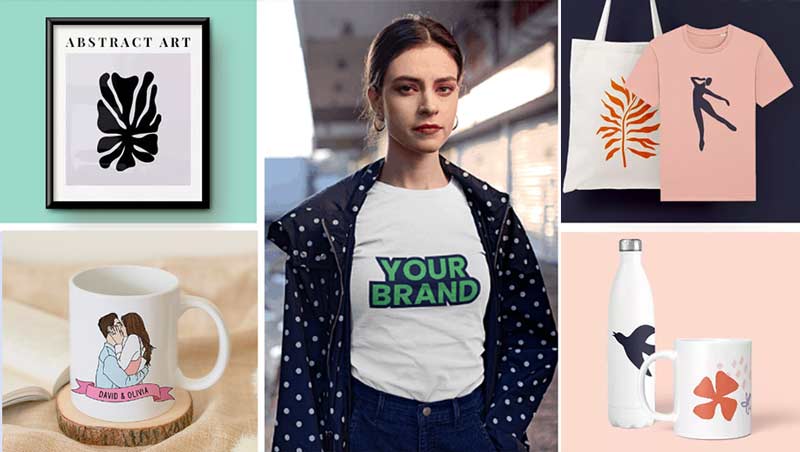
Both handle all the bestselling print categories like apparel, home decor, wall art, and phone cases exceptionally well. Printful boasts faster fulfillment for core products shipping within the US.
So, weighing selection vs. shipping times – Printify wins for variety and customization, and Printful for speed and reliability.
Order Quality & Branding Options
Product quality and branding capabilities are key factors that will make or break your business when evaluating print-on-demand platforms.
Printify and Printful are comparable in order quality, thanks to strict supplier vetting processes and quality control checks. Printify’s dropshipping model allows you to choose suppliers with stellar ratings if product quality is paramount.
You can’t go wrong with either platform for core apparel and products. Both use recognized brands like Bella + Canvas, Next Level Apparel, Gildan and print via top-of-the-line DTG, vinyl, embroidery, and dye-sublimation technologies.
Branding flexibility is also excellent on both Printify and Printful:
- Add neck, sleeve, and hem tags with your branding.
- Custom-printed packaging and hang tags
- Reseller programs to enable white-label/private-label
- No mandatory branding or logos
When it comes to order quality and branding control, Printify and Printful are nearly identical – so it’s effectively a toss-up between them. Grab some product samples from both to determine your preference.
What Profit Margins Are Realistic?
Profit margins will ultimately depend on your pricing strategy and the types of print-on-demand products you focus on. Generally speaking through:
- Apparel and accessories yield 20-40%+ profit margins
- Wall art and home decor can yield 100%+ margins
- Phone cases around 50-100% margins
There is a huge variation, though. Simple t-shirt designs might have a 30% margin, while trending podcast merchandise with viral traffic can jump upwards of 60%.
You’ll need to crunch numbers specific to your POD business plans to accurately lock down pricing and expected profits.
Printify and Printful provide easy profit calculators inside your account dashboard to determine margins. You should expect reasonably similar margins across both platforms from a product-level and production standpoint.
Where profitability often differs more significantly is shipping and fulfillment fees based on order quantities and global vs. domestic target markets. We discuss this next!
Fulfillment, Shipping & Distribution
Arguably, the most prominent factor setting Printify and Printful apart is how order fulfillment and shipping works.
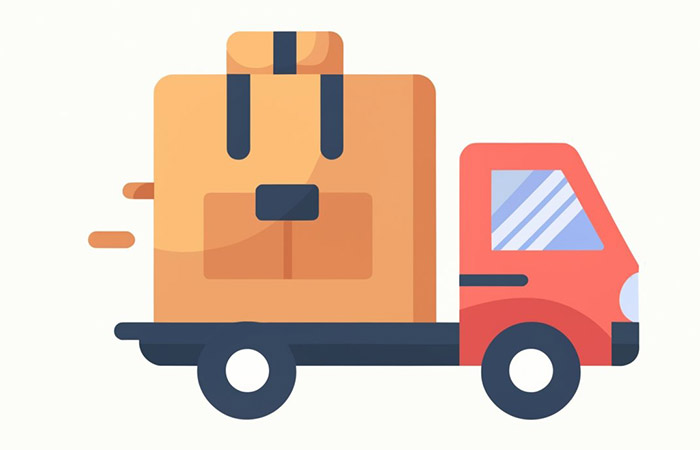
A Printful estimates that it can take 2-7 business days to make apparel products and 2-5 business days for non-apparel products.
For shipping, it depends on where the product has to be shipped to. On average, Printful suggests that it might take about four business days. Printful targets over 3 million orders yearly by working with global carrier companies.
Some of the listed shipping solutions include FedEx, DHL, USPS.com, and DPD. The company has a full-detailed guide on how to calculate the shipping rates.
You can let the customer calculate the shipping at checkout or include it in the retail price. Customs fees may also apply depending on the geographical location where your customer is located.
Printify also fulfills orders using top carrier companies. The company has also partnered with local fulfillment companies to support drop shippers selling products from around the world effectively. However, the rates on some of these solutions are a bit higher.
Shipping solutions on Printify take longer to deliver international orders since they have fewer fulfillment centers. Here’s a breakdown of the shipping times:
Location
- USA: 7-15 business days
- Canada: 10- 15 business days
- International: 10-30 days
Printify doesn’t explain much about how long it’d take to manufacture a product. Printful on the other hand, updates the shipping rates during checkout in real-time.
Printify offers a faster solution for merchants using the Advanced Shopify plan to take the bad with the good.
Average Shipping Time & Price (Tshirt)
| Printify | Printful | |||||
| Country | Shipping Time | First Product | Additional Product | Shipping Time | First Product | Additional Product |
| US | 2 – 5 business days | $4.75 | $2.40 | 2 – 5 business days | $4.69 | $2.20 |
| Canada | 10 – 30 business days | $9.39 | $4.39 | 2-6 business days | $8.29 | $1.95 |
| Australia | 10 – 30 business days | $12.49 | $4.99 | 2-5 business days | $7.19 | $1.30 |
| Rest of the World | 10 – 30 business days | $10.00 | $4.00 | 8-21 business days | $11.99 | $6.00 |
Website & Market Place Integrations
No matter which platform you select, you’ll want to connect your Printify/Printful account to your online store or sales channels.
The good news is both platforms provide excellent third-party integrations. Printify and Printful seamlessly work with major online stores such as Shopify, WooCommerce, Wix, Bigcommerce, Squarespace, PretaShop, etc. However, Printful seems to have more integrations, including Ecwid, Weebly, Gumroad, Magento, Big Cartel, 3dcart, Launch Cart, Webflow, Nuvemshop, Shift4Shop.
In terms of marketplaces, Printful has native integration with Amazon, Etsy, eBay, and Storeny, while Printify can integrate with Etsy, eBay and Walmart.
So, designers with not-so-common e-commerce platforms such as Laucn Cart, Big Cartel, Webflow, Nuvemshop, and Shift4shop Wix or have an easier time of things setting up shop with Printful.
Printify has recently upped its game by launching an inbuilt no-code store builder called Pop Up Store. This feature lets you launch instantly without building a website/online store from scratch. You can start selling in just a few minutes.
But odds are, whatever platform your store runs on, you’ll have great integration support from both POD services.
Tools for Designing Products
For many online store owners, being able to customize and design products is mandatory.
Printify and Printful offer handy built-in design tools and templates to create stunning designs in minutes without any graphic design experience.
However, when comparing the two, Printful is ahead for design and mockup capabilities.
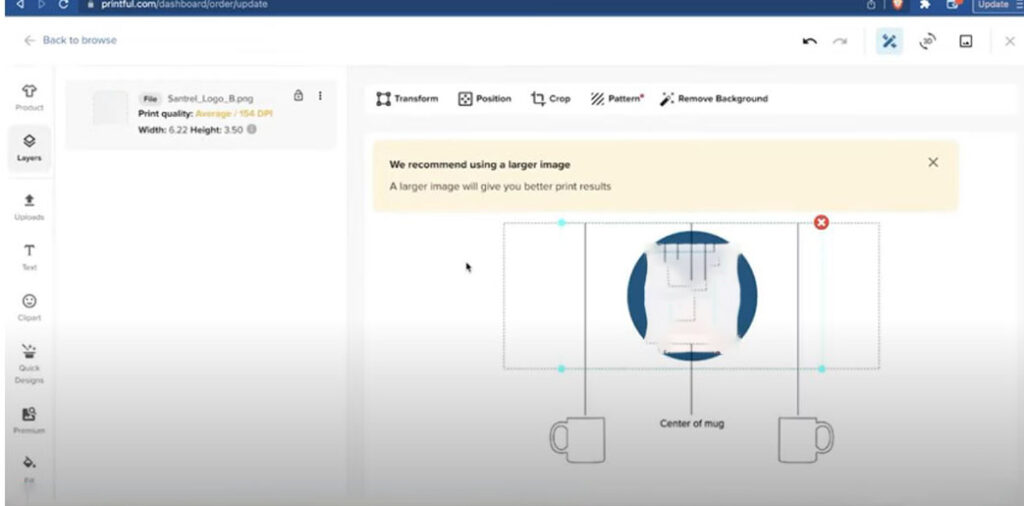
Printful’s design tool feels more like advanced design software, allowing exact and detailed product customization. You can fully customize every element on over 100 product types. There’s even multi-side design support for mugs, socks, bags, and art prints.
By comparison, Printify’s editor feels more basic and constrained to more straightforward single-side printing configurations. Printify’s customization works beautifully for apparel yet falls short if you want more complex wraparound designs on other products. However, Printify’s editor includes an AI generator, Fivvr design services and integrates with Shutterstock.
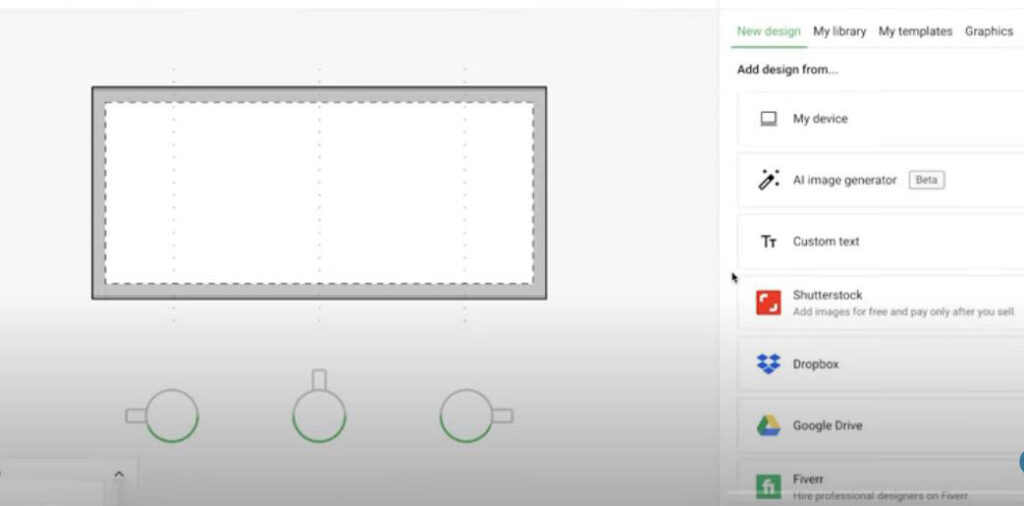
So Printful wins this battle on design flexibility and mockups. But for basic t-shirt designs, Printify still gets the job done fine.
Mobile App for Managing Orders
Printful offers a mobile app for iOS and Android available on the Apple App Store and Google Play Store respectively.
With Printful’s mobile app, store owners can handle all key account management tasks on-the-go:
- View, edit and refund orders
- Track inventory
- Get notifications
- View top products
- Review P&L financials
- Communicate with support
It’s a handy way to run the backend of your print-on-demand business from anywhere.
Meanwhile, Printify currently lacks an iOS mobile app, so it is a desktop for managing your orders and accounts.
Customer Support
Both Printify and Printful offer solid customer support via:
- Live chat
- Self-service knowledge base
- Documentation
- Video tutorials
As two of the most prominent POD players in the industry, both companies are staffed to handle wide-ranging merchant inquiries without massive delays.
Printify seems to edge out Printful slightly regarding support satisfaction and responsiveness ratings. Printify guarantees replies within 12-24 hours during weekdays.
Over the years, some complaints have piled up regarding Printful’s support being slower to respond and occasionally unhelpful. So, a narrow win for Printify on the customer service front.
Pros & Cons Summary
Let’s summarize the key advantages and disadvantages of both platforms:
Printify Pros
- Zero monthly fees ($0 plans available)
- 400k+ available products
- Retail partnerships for fulfilment
- Excellent designer tool integrations
- Global fulfillment
- Android mobile app
- Free Pop Up Store
- Ai and Shutterstock in the design tool
Printify Cons
- 4+ week average fulfillment times
- Less customizable designer studio
- Higher int’l shipping costs
- No iOS mobile app
Printful Pros
- Vertically-integrated production
- 2-5 day avg shipping (USA)
- Volume discounts available
- Advanced customizable designer
- Great for US brands
- iOS/Android mobile app
Printful Cons
- $29+ monthly subscription fees
- Smaller product catalog
- Domestic USA focus
- No mobile app
- Longer int’l delivery
- Does not leverage AI in the design tool
Which is Better: Printify or Printful?
So all factors weighed – which print-on-demand service emerges as the superior choice?
The reality is Printify and Printful each have merits geared towards slightly different use cases.
Printify excels with more options and better costs for new entrepreneurs and global customer demand. Established high-volume US brands may reap benefits by opting for Printful.
If deciding strictly on capabilities, though, Printify appears to come out slightly ahead as the more robust print-on-demand platform based on this in-depth look.
Yet you absolutely can find success building a store with either. We recommend browsing the product range, trying samples, and seeing which partner companies feel like a better culture fit, too.
Recommended Print-on-Demand Alternatives
If neither Printify nor Printful seems a perfect fit for your e-commerce plans, it’s worth mentioning a few other popular print-on-demand services briefly:
Teelaunch specializes in super fast shipping and excellent bulk order pricing. So retailers planning for trade shows, retail chains or large corporate promos may find Teelaunch better optimized. However, customization and selection are limited.
GearBubble offers a huge range of over one million printed products with integrated traffic and marketing tools. But overall, print quality trails Printful and Printify slightly.
TeePublic dominates the artist community and boasts over 10 million t-shirt designs. For independent creators, TeePublic likely makes more sense over Printify or Printful. But less attractive for traditional e-commerce.
There are dozens more print-on-demand companies beyond Printiful and Printify too. Niche use cases may find better fits by looking further.
